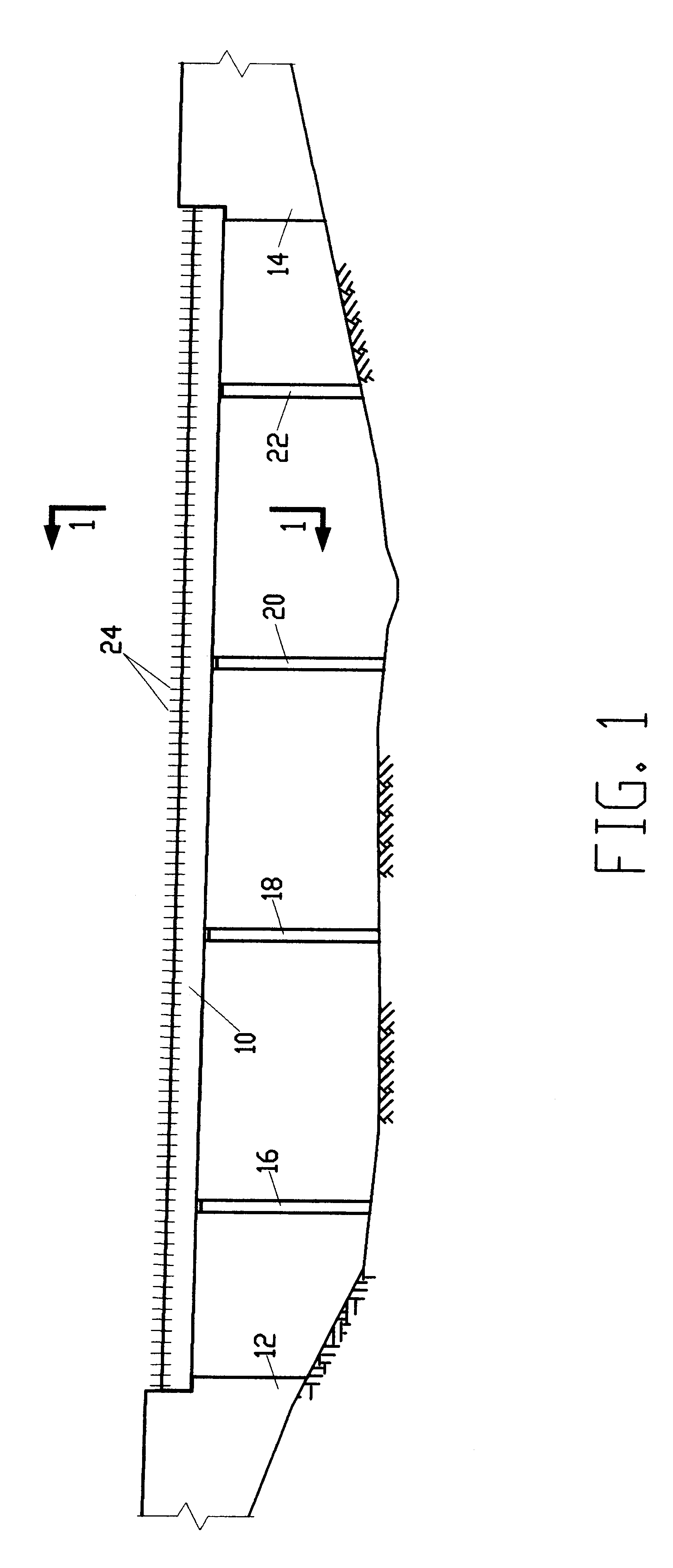Composite bridge superstructure with precast deck elements
a composite bridge and superstructure technology, applied in bridge construction, bridge materials, construction, etc., can solve the problems of needing to prestress the entire cross section, excessive use of prestressing steel, so as to save maintenance costs, save prestressing steel, and improve the riding quality of the deck
- Summary
- Abstract
- Description
- Claims
- Application Information
AI Technical Summary
Benefits of technology
Problems solved by technology
Method used
Image
Examples
Embodiment Construction
Details of the invention shall now be described in accordance with a preferred embodiment and with reference to the drawings. In the preferred embodiment the bridge superstructure consists of a single composite member with a pair of prestressed beams.
As shown in FIG. 1, construction of the composite member begins by erecting a pair of prestressed beams 10 (of which only the proximally disposed beam is shown) spanning the gap between abutments 12 and 14. A plurality of pre-erected piers 16, 18, 20 and 22 are used to support the prestressed beams 10 as known in the art. A plurality of shear stirrup means 24 are disposed along each of the prestressed beams 10 respectively.
As seen best in the cross-sectional view of FIG. 4 taken along section lines 1--1 of FIG. 1, each of the shear stirrup means 24 is substantially U-shaped, with a pair of legs 26 embedded in one of the prestressed beams 10 and a loop 28 having paired bends 30 horizontally spaced from each other, projecting above the pr...
PUM
 Login to View More
Login to View More Abstract
Description
Claims
Application Information
 Login to View More
Login to View More - R&D
- Intellectual Property
- Life Sciences
- Materials
- Tech Scout
- Unparalleled Data Quality
- Higher Quality Content
- 60% Fewer Hallucinations
Browse by: Latest US Patents, China's latest patents, Technical Efficacy Thesaurus, Application Domain, Technology Topic, Popular Technical Reports.
© 2025 PatSnap. All rights reserved.Legal|Privacy policy|Modern Slavery Act Transparency Statement|Sitemap|About US| Contact US: help@patsnap.com



